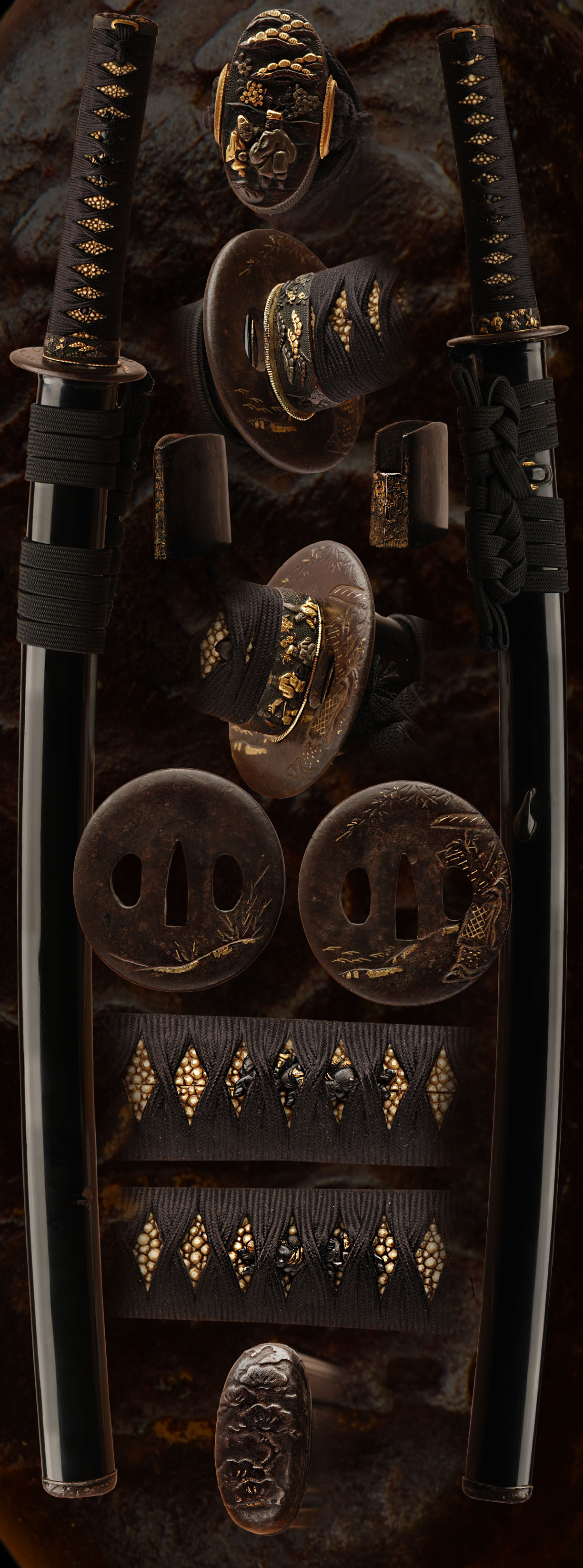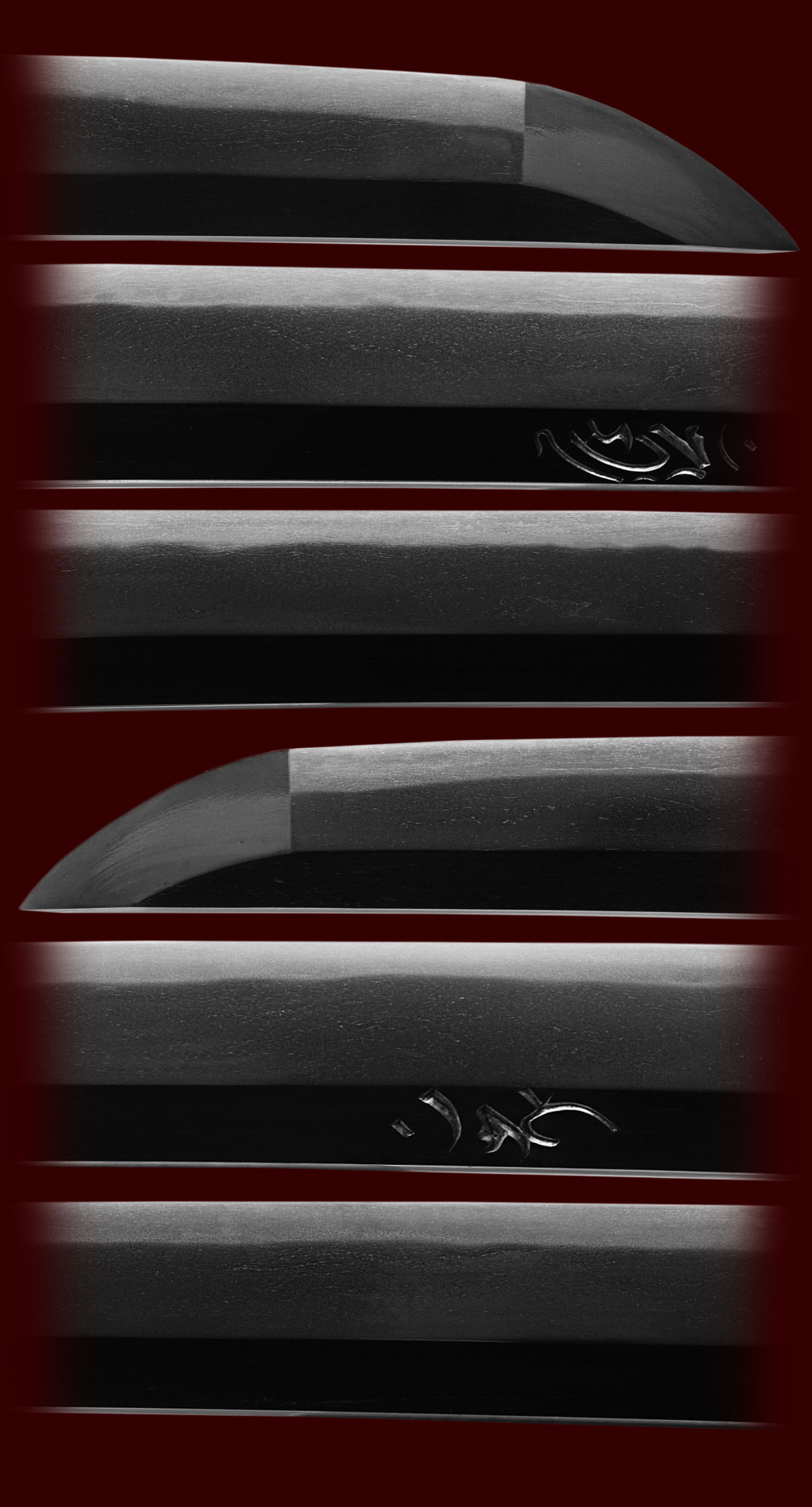An incredible Monju den wakazashi with horimoni in pristine condition. The Monju smiths were a direct off-shoot of the Yamato Tegai school.
FROM UNIQUE JAPAN:
The Yamato school of sword making is one of the oldest in sword history.
The Yamato tradition finds its beginnings from the Nara Period in 701 in Uda, Nara prefecture.
Legend says that Amakuni rose to the challenge and was able to make swords with a sharp cutting edge (high-carbon) while maintaining a strong and flexible body (lower-carbon count).
Subsequent battles saw none of this swords breaking and the emperor praised him.Yamato swords were very thick, and this ‘meaty look’ is what Yamato swords have come to represent.
THIS WAKIZASHI WAS CRAFTED BY THE MONJU GROUP OF SMITHS IN THE YAMATO TEGAI TRADITION. THE NAME OF THE TEGAI SCHOOL ORIGINATED FROM THE TEGAIMON (GATE) OF TODAIJI TEMPLE IN NARA. THE SMITHS LIVED IN THE TEMPLE TOWN.
THE TEGAI SCHOOL WAS FOUNDED IN THE LATE KAMAKURA PERIOD BY KANENAGA AND CEASED TO BE ACTIVE AT THE END OF THE NAMBOKUCHO PERIOD (CIRCA 1392).
THIS IS A BEAUTIFUL EXAMPLE OF A MONJU SWORD FROM THE SHINTO PERIOD.
THIS IS IN THE YAMATO TRADITION WITH ALL THE ACTIVITY ASSOCIATED WITH QUALITY CRAFTSMANSHIP. THERE IS A POWERFUL HIGH SHINOGI WITH A STRAIGHT SUGUHA HAMON .
There is a mixture of ko-itame and masame hada in the body of the sword.
A lovely set of Edo-period koshirae which looks to have been re-lacquered and wrapped also adorns this very old sword. The mounts appear to be a landscape theme with scholars.
The menuki are of Japanese horses running freely.
This sword was reviewed by the NTHK and given 4 seals of approval.
Notice the oshigata (paper stencil rubbing of the tang) rather than a photograph that is currently found on certificates issued today.
The sword is approx.21.5″ long, ubu and unsigned.
THE BOSHI IS SUGU-HA KO-MARU WITH HAKIKAKE.
THERE IS URA- BONJI HORIMONO ON THE OMOTE.
There is one mekugi ana and the yasuji is kiri.
It is in excellent polish and the shinsa team remarked: ” Yamato no kuni, around Enpo. ( 1673-1681 )
- Mei: Mumei
- Date: Enpô (1673-1681)
- Nagasa: 21 1/2 inches
- Sori: 12.0 mm
- Width at the ha-machi: 30.3 mm
- Width at the yokote: 21.6 mm
- Thickness at the mune-machi: 7.2 mm
- Construction: Shinogi zukuri
- Mune: Iori
- Nakago: Ubu
- Kitae: ko itame
- Hamon: suguba
- Boshi: Suguba ko-maru, hakkake
- Condition: Good polish
Email us if your interested in this item and remember to include the order number for this item listed on the top of this page: (FSS-###)
NTHK
Kanteishô
Den Shintô Monjû
Shôshin
Length is one shaku eight sun three bu
February 10, 2012
NBTHK
No. 17,686
Mei inscription: Mumei
Kitae: Ko-itame
Hamon: Suguba
Bôshi: Suguba ko-maru, hakkake
Horimono: Omote-Ura Bonji
Nakago: One mekugi ana, Yasuji is kiri
Remarks: Yamato no Kuni, around Enpô (1673-1681)
For Sale

























